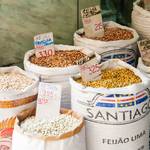General
Transport
People
Accomodation
Food & Drink
Sightseeing
Legal
Money
 What is the currency of Costa Rica?
What is the currency of Costa Rica?
 Where can I exchange money?
Where can I exchange money?
 Can I use a credit or a debit card?
Can I use a credit or a debit card?
 How do I use ATMs in Costa Rica?
How do I use ATMs in Costa Rica?
 What can I bring home from Costa Rica?
What can I bring home from Costa Rica?
 Is Costa Rica expensive?
Is Costa Rica expensive?
 Am I expected to tip in Costa Rica?
Am I expected to tip in Costa Rica?
Safety & Health
Family travel

How do I save money on my trip to Costa Rica?
Although Costa Rica is less expensive than many destinations in North America, Europe, and the South Pacific, it isn’t as budget friendly today as it once was. Like all great things, the word has gotten out. Costa Rica’s beautiful beaches, rainforests, and wildlife draw millions of visitors annually, and with that popularity, prices are on the rise. But don’t fret. If you’re a frugal traveler, there are plenty of ways to save.
Travel during the low season. Most people visit Costa Rica during the dry season (December to April), but if you don’t mind getting a little wet, the rainy season is a great time to come. Everything is green and lush and beautiful. The rainy season runs from May to November but in most locations it doesn’t get too intense until August or September. Hotels are a lot cheaper and it’s much easier to negotiate discounts on tours and activities when there are fewer tourists around.
Don’t travel during the holiday season. Christmas, New Years, and Easter (Semana Santa) are big holidays in Costa Rica and the busiest times of year for travel. Most hotels, and even rental car companies, charge peak rates over the holidays and even during the weeks leading up to and following. If you can, try to travel during off-peak times to get the most value for your money.
Avoid big tourist towns. The most popular destinations, like the beach towns of Guanacaste, are more expensive than lesser known places that haven’t made it into the guidebooks yet. Of course you’ll want to visit the hotspots too, but staying just 15 minutes away could save you hundreds on meals and lodging.
Eat at sodas. Sodas are local family restaurants that serve inexpensive, typical Costa Rican food. They vary from full-blown restaurants to shacks with a couple of stools. Often they don’t look like much but don’t let the plastic tablecloths and simple structures stop you. You can have a plate of fresh fish, rice and beans, plus salads for only about 3,500 CRC!
Skip the bottled water. There are exceptions depending on where you’re visiting (e.g., Puerto Viejo de Talamanca), but almost everywhere in Costa Rica the water is treated and safe to drink, so don't waste your money on bottled water if you're on a budget.
Take advantage of free/inexpensive activities. Sure, you’ll want to go zip-lining and do other fun adventure tours, but Costa Rica has lots to do for free or not very much. Get a sense of the culture by walking around a Tico town, browse the local feria (farmers market), or visit one of the 50+ national parks and reserves.
Bring sunscreen and insect repellent from home. Some things cost much more in Costa Rica and sunscreen and bug repellant top the list. Bring a small bottle of each as they can cost up to 15,000 CRC each in Costa Rica.
Take the bus. Tourists usually seek the most comfortable way to the sites and find it much easier than a private minibus, a taxi or a car that takes us from one destination to another. However, in Costa Rica the difference in prices between private and public transport is enormous, so if you are encouraged as much as possible to abandon the comfort and bet for savings. The public bus in Costa Rica is very cheap, plus riding a bus with the locals is a great cultural experience. You can check the bus schedule online.
Take self-guided hikes instead of booking tours. Instead of booking a tour with a company for 55,000 CRC (100 USD) to the national park, drive yourself, pay the entrance fee and go on a self guided hike. You will need to find your own transportation but even if you rent a car, the prices will end up cheaper than paying over 55,000 CRC every tour. For example, the Catarata Llanos de Cortes waterfall has a 1,000 CRC entrance/parking lot fee but if you book a tour, it ends up being at least 45,000 CRC per person.
If you use dollars, make sure to check the exchange rate. USD is readily accepted in Costa Rica but there’s a catch. Use your credit card but not all souvenir stores take credit cards. And make sure you check the current exchange rate as it has been going up the past couple years.

What alcoholic drinks to try while in Costa Rica?

Is there tea and coffee culture in Costa Rica?

How do I use ATMs in Costa Rica?

What can I bring home from Costa Rica?

How much does the food cost?
